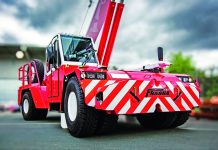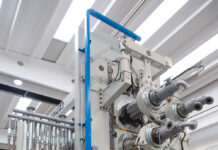In Europe, Parker is the first flexible hose manufacturer that develops a new rubber compound that complies with the EN45545 standard in terms of reaction to fire, smoke behaviour and toxicity.

In September 2013, the new EN45545 standard was introduced to improve passengers’ and personnel’s safety on railway vehicles in case of fire on-board.
The new trains manufactured starting from May 2016 must conform to this new standard. Concerning hoses, which are largely used on railway vehicles like locomotives, high-speed trains and trams, it was priority to attain the required conformity at once.
The new safety standard
It is not a secret that the railway industry is one of the most exacting in the world in terms of stresses exerted on components and systems used, especially if we consider the vibrations and temperatures existing in application environments.
With the advent of innovations like high-speed trains and longer tunnels, the demand for a higher survival possibility in case of fire has induced the EU to look for an alternative to the endless railway sector standards that already existed on a national scale. Here, where railway trips are very common in all Europe, producers and players tried to meet their individual standards, with consequent long times and high costs.
On the contrary, the EU has decided to create a single standard sharing in assuring the implementation of a safe railway system in the entire continent. The first results of this project lasted 20 years emerged in September 2013, with the publication of the EN 45545 fire safety regulation.
Nevertheless, there are important additions to the EN 45545-2 regulation that deserve utmost attention. Nowadays, all train components weighing more than 100 g, for instance, undergo tests.
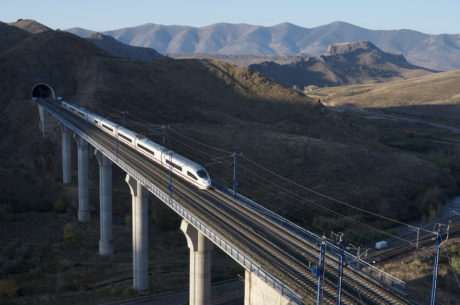
Combustion behaviour
Therefore, what are the main hose applications in the railway sector and what are the expected specifications to grant the compliance with the EN 45545-2 regulation? Well, one of the most important demands concerns the “combustion behaviour” of materials and components, where products are listed according to different risk levels.
The EN 45545-2 regulation, for instance, contains specific requisites for: oxygen index as per EN 4589-2; smoke density as per EN 5659-2; smoke toxicity as per NF X70-100-1 e -2. According to the classification, the regulation subdivides materials intended for installation in different areas (R22 inside / R23 outside) and three danger levels (HL1, HL2, HL3), where HL3 is the highest. Besides, flexible hoses that are installed inside hydraulic/pneumatic circuits that are deemed essential for the operation performance of the vehicle must pass the flame test according to the EN 15540 regulation (800 ° C minimum for at least 15 minutes), whereas another requisite to be satisfied to grant the conformity is maintaining the polluting emissions inside the established limits, which are very strict.
The behaviour in contact with fire of materials and components does not depend only on their intrinsic properties but instead on their application, shape and material arrangement, the exposed surfaces and the relative mass and material thickness. According to this base, the products listed in the EN 45545-2 regulation are further classified into subgroups depending on: use in accessible or not openly accessible areas (like for instance the driver’s cabin); general application zone (internal or external) and specific application area (mobile, electric and mechanical equipment).
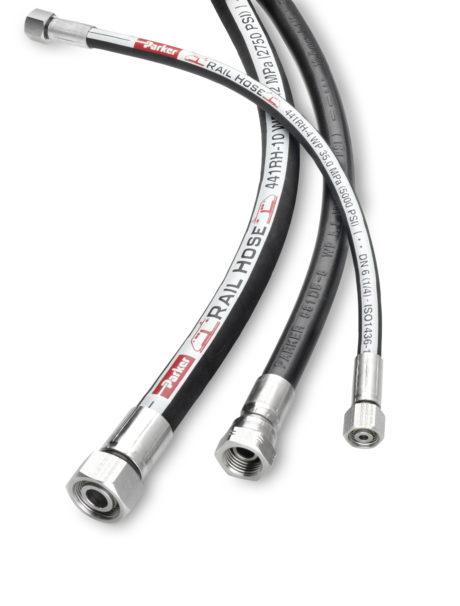
Tested and certified
The application type and the categories according to the EN 45.545-1 regulation are used to determine the risk levels on which requisites are based. This part of the regulation specifies test procedures, conditions and requisites for each risk level in terms of fire behaviour. These requisites are currently specified in 25 levels (R1-R25).
Testing methods are illustrated in detail. Lateral “Flame spread” tests, for instance, must be executed on pending vertical samples in conformity with EN 5658-2, while the determination of the optical density of smokes must occur in a chamber compliant with the EN 5659-2 regulation. Further provisions include the heat release determination and the mass loss rate (cone calorimeter method) according to EN 5660-1 regulations, and smoke toxicity tests as per NF X70-100 parts 1 and 2. There is also the ignition test for small parts and impregnated materials according to EN 11925-2.
In the case of Parker products, such tests are executed by the certification company LAPI. The target for flexible hoses always consists in obtaining high resistance to flame with the use of special compounds and the latest machining technologies. The goal is operating as partner with customers in order to grant safe, reliable, resistant and flexible hoses and to offer a trouble-free service, too.
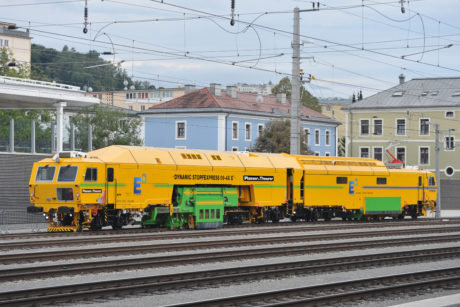
Hoses for all railway applications
Parker is a partner experienced in railway applications and it is certified for all requested standards. The company has developed a broad range of both low-and high-pressure hoses for all railway applications inside locomotives, high-speed trains, urban trains, regional trains, trams, suburban trains /subways and maintenance vehicles to meet the requisites of the EN 45545-2 regulation. Parker is one of the primary producers of flexible hoses that can satisfy all of these requirements in all classes.
There is a strong demand for flexible hoses in conformity with EN 45545-2, given that the importance of the mass transport is growing and the demand is high in all Countries in the world. In the case of Parker, the success key of several projects is the fact that in Europe Parker was the first hose manufacturer that developed a new rubber compound complying with the standards provided for by EN45545 in terms of reaction to fire, smoke behaviour and toxicity. Parker hoses provide also advantages like a better bending radius to favour a simpler design and better handling, thus allowing a cost saving.
These flexible hoses can be supplied for several applications on machine fleets, for instance hydraulic applications (braking, hydrostatic system), pneumatic (braking system, suspensions, auxiliary systems), cooling systems (water cooling, air conditioning), liquid transport (diesel, water for health services) and heating (water).
The available solutions include the 681DB 2TE hose and the compact 441RH hose, both equipped with a range of steel and stainless steel fittings.
In addition, the compact 477RH hose, suitable for very small bending radii, and 421RH for big sizes (up to 2″). Moreover, the compact three-braid 372RH hose is designed for high pressures (level-4SP), while the Compact Spiral™797RH is suitable for applications needing both high pressures and small bending radii. Both are provided with Parkrimp No-Skive pinching technology for those that prefer assembling autonomously the fitted hoses in safe and reliable manner.


